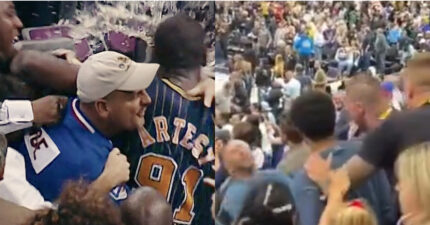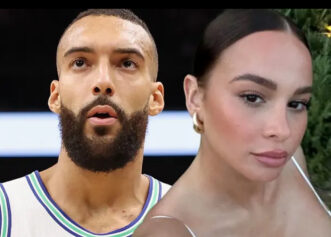Late in February, after a New York loss in Miami, then coach Mike D'Antoni said, "It's hard to be Peter Pan every day."
That was the night when Jeremy Lin, the boy that could fly, fell back to earth. And he fell hard. He shot 1 for 11 and had as many turnovers (eight) as points. The game proved he was a young dude capable of some dramatic flourishes, like his signature 38-point game against the Lakers, but a still developing ball player that — when it was no longer Derek Fisher and Steve Blake in front of him, but Mario Chalmers, Dwyane Wade, LeBron James and a committed NBA defense — wasn't yet and probably never will be Steve Nash or even Chauncey Billups.
A couple of weeks ago, when Lin started flirting with a Houston offer sheet, I wrote: “Just know that, after Lin’s incredible, historic February, he came back down to earth in March and averaged a solid (and only solid) 15 points on 40 percent shooting and six assists against four turnovers. That’s who the Knicks (or Rockets) will be paying $10 to $12 million in 2014 and 2015.”
Well, the Rockets upped the ante. The offer sheet Lin recently signed is set to pay the young guard just under $15 million in the third season. Were the Knicks to match the offer – outside of some serious cap ingenuity/manipulation – Lin would end up costing the Knicks about $43 million that third season (go here for an explanation).
Carmelo Anthony is right – that’s ridiculous.
At the beginning of last season, the NBA blocked a trade that would have made Chris Paul a Los Angeles Laker. The league claimed they did it for “basketball reasons.” There aren’t too many valid basketball reasons to pay Lin $15 million dollars based on 25 games and there are less than zero basketball reasons to spend $43 million on the man in one season.
Yet, the narrative on Lin is one that keeps analyzing him less as a player and more as a commodity and phenomenon. This loses sight of the fact that, if Lin turns out to be simply an average basketball player, he will no longer be a commodity or a phenomenon.
There’s the idea that, even if Lin isn’t worth his outsized price tag in his third season, “Lin the money-making machine” will more than make up for that in ticket sales, retail/merchandise revenue, etc; because, as an Asian American, he appeals to the vast Asian market overseas.
But, just yesterday, The Atlantic posted an interesting piece somewhat debunking this myth. Using Yao Ming for context, Darius Tahir looked at the Houston’s franchise value appreciations during Ming’s tenure. Based on Yao’s financial impact during his Houston career, were Lin to have a similar effect, he could be worth $144 million over a four-year period to the Knicks. However, the piece posited that a more moderate estimate would be about $40 million.
These hypothetical figures valuing the Jeremy Lin Commodity, though, get thrown out the window if the young cat turns out to be mediocre. Last season, when Anthony came back from injury and Mike Woodson took over as coach and Baron Davis worked his way into shape and NBA defenses started game-planning for Lin, his minutes and production dipped and then leveled. There are Yaos and then there are Yi Jialians (who never provided a financial windfall for any of the teams he bounced around at). Lin probably ends up somewhere in the middle. This obviously gives the Knicks pause.
What’s telling is that, in a city full of cynics, Knicks fans are so thirsty for relevance that many have turned a blind eye to the fact that Lin might be merely a good and sometimes really good player, but he’s not a franchise saving star. Thousands of fans have signed a Change.org petition for the Knicks to keep him. They remember the euphoria of Linsanity and want to recapture that feeling.
But what if, by All Star break, Lin has been revealed as a turnover prone guard, that doesn’t mesh with team’s star and can’t stay on the floor during crunch time because he can’t guard anyone? By year three, Knicks fans will be spilling over with resentment. It would be the worst marriage. And then it would be up to Knicks management (not exactly San Antonio East) to find an equitable way to end the experiment. In this scenario, with the Jeremy Lin Commodity waning and Linsanity in a time capsule with Lana Del Ray, it’ll only be about basketball.
That’s the thing. The jury is still out – on Lin the player, commodity and phenomenon – and you don’t sign Lin to a cap-crippling contract unless the verdict is in. The Knicks are right to call it a mistrial and let the dude walk.



